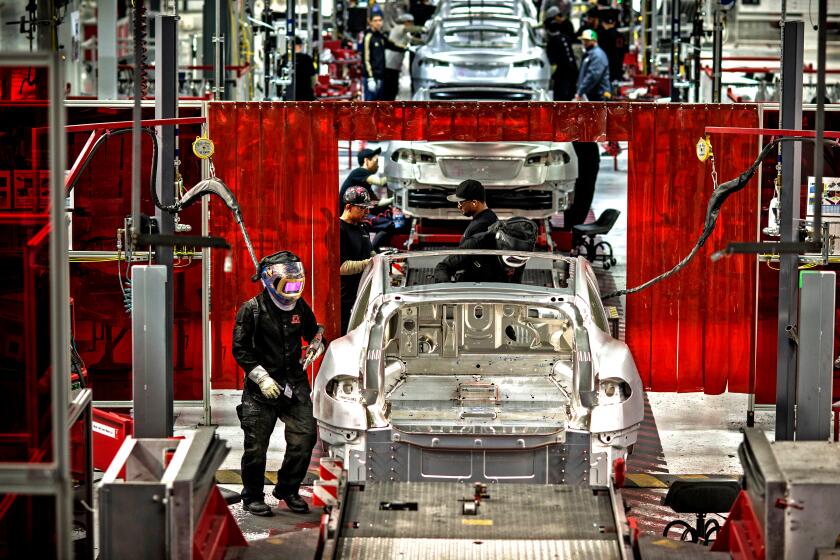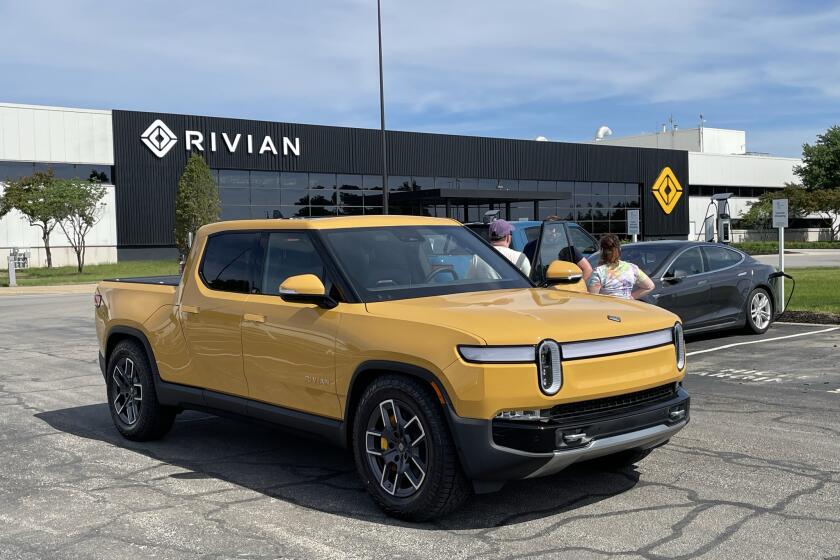Hybrids don’t toot their own horns
Those who want to reduce this country’s reliance on foreign oil and clean up the air we breathe can purchase hybrids that consume less fuel and produce fewer pollutants.
But unless those motorists acquire a far-out-looking Honda Insight or a slightly odd-looking Toyota Prius, there’s no way for others to know of the contribution they are making.
A Ford Escape hybrid simply adds a green leaf to the hatch lid, the Lexus RX 400h hybrid puts an “h” next to the name badge, and only special instrument panel gauges and badging let folks know the Honda Civic and Accord hybrids are different.
Is such labeling understated advocacy or stylistic indifference? Consumers don’t seem to care.
“I was concerned that gas was $1.80 a gallon when I bought my Civic hybrid in 2003 and probably was going to go up,” said Sue Geiger, a retired hospital administrator. “But my primary concern was that if gas ever became scarce, a hybrid would let me go farther on what gas I had.
“I wasn’t concerned about flashy and, in fact, bought the Civic because the Prius looked different and a little odd,” she said.
That seems to be the general sentiment of those who have opted for conservation and clean air.
David Warnke of West Bend, Wis., bought a 2003 model Prius.
“I’m an electrical engineer. I bought the technology, not the package it came wrapped in,” Warnke said. “I didn’t feel the need to wave a flag. I could have bought a Corolla and put the $3,000 to $4,000 more the Prius cost toward gas, but that’s not the point, which is contributing to reducing gas consumption, and I couldn’t be more pleased.”
Automakers have long held that styling attracts consumers, but hybrids are proving technology gets them to pull out the checkbook as well.
So now automakers are simply installing batteries and an electric motor alongside the gas engine in existing vehicles.
Ironic, because hybrids took the opposite approach when the first production model, the Honda Insight, arrived in 1999, a little two-seater that looked designed by science-fiction writers rather than automobile stylists.
The Insight took a cue from General Motors’ novel EV-1 car, unveiled in the ‘70s, which signaled a new technology -- battery-powered cars that consumed not a drop of gas nor emitted an ounce of noxious exhaust.
Trouble was, getting to Grandma’s house for Christmas dinner meant leaving Thanksgiving morning because you had to stop every 80 to 100 miles for a six- to eight-hour battery charge.
Those limitations kept electrics from catching on. But hybrids, which tackle the range issue by combining a gas engine and electric motor, have.
The Insight paved the way. Like the EV-1, it was powered by batteries. Unlike the EV-1, it added a gas engine and brakes that recharged the batteries as you drove.
Today, Toyota is the leader in hybrid sales and should sell 150,000 Prius, Highlander and RX400h units this year. The company has doubled Prius output to 100,000 units this year and vowed to sell at least 600,000 hybrid Toyota and Lexus vehicles annually by 2010.
Honda remains cautious and is content with a combined-sales forecast of about 60,000 Insight, Civic and Accord hybrids for ’06.
“If 30% of all cars sold were hybrids, it would be a proven technology, but it’s still too early to tell,” Honda spokesman Chuck Schifsky said.



